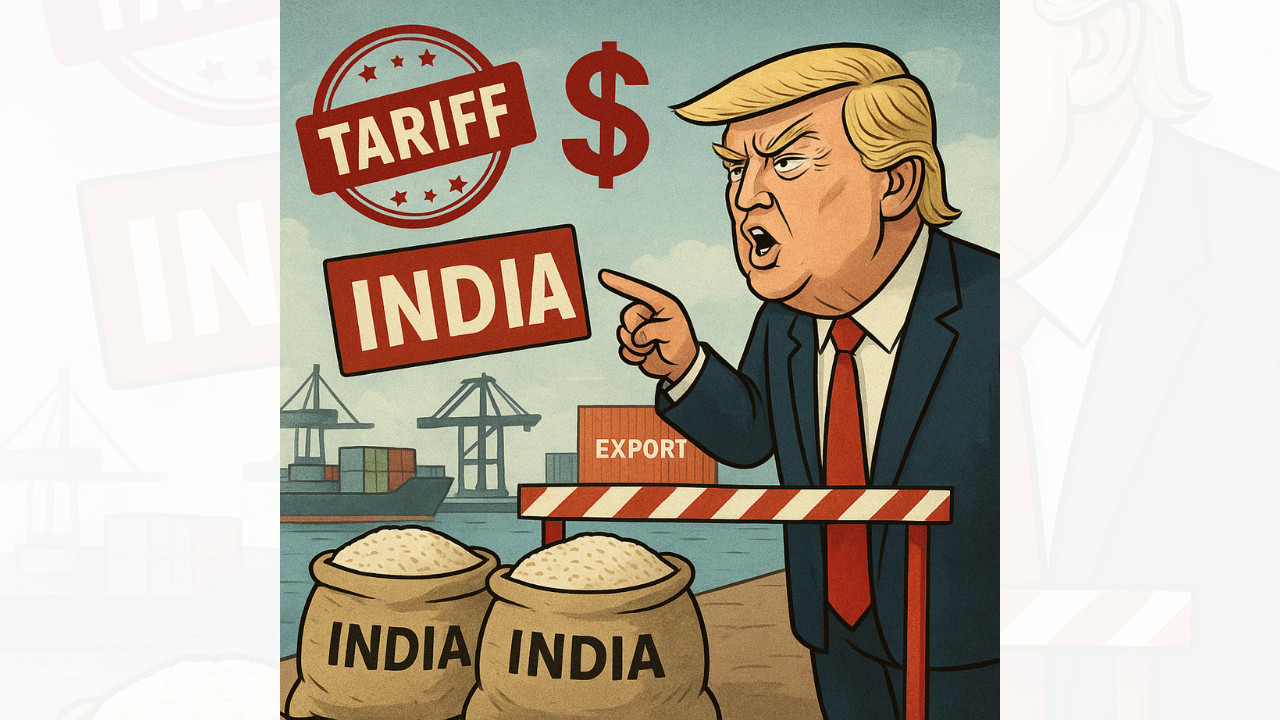Will Trump’s Tariff Hikes Leave Indian Exporters Reeling?
Donald Trump’s proposal to impose a hefty 50% tariff on goods imported into the United States is sending ripples of unease through global markets. The news has particularly unnerved Indian exporters, who are now bracing for potential turbulence. This isn’t just another trade spat; it could fundamentally reshape the landscape of international commerce, with India potentially bearing a significant brunt.
For years, India has diligently worked to establish itself as a reliable exporter, offering competitive pricing and a growing range of products to the US market. Now, all that hard work faces a very real threat. The sheer magnitude of the proposed 50% tariff is enough to make even the most seasoned exporter sweat. How exactly would this impact India, and which sectors stand to lose the most?
A Sector-by-Sector Look at Potential Fallout
Several key industries could face significant headwinds. The impact won’t be uniform; some sectors are more vulnerable than others, depending on their reliance on US exports and the availability of alternative markets.
* Pharmaceuticals: India’s pharmaceutical industry, a major exporter of generic drugs, is watching closely. While essential medicines might be somewhat insulated, the higher cost of Indian pharmaceuticals due to the new tariffs could make them less competitive, potentially losing market share to other countries or even domestic US manufacturers.
* Textiles: The textile sector, already facing challenges, could be hit hard. Increased tariffs could make Indian textiles significantly more expensive in the US market, impacting demand and profitability for exporters. This, in turn, could put pressure on employment in this crucial sector.
* Engineering Goods: From machinery to automotive parts, Indian engineering companies have steadily grown their exports to the US. These exports would immediately become less competitive, likely affecting both large corporations and smaller manufacturers in the sector. The impact on smaller businesses, which lack the resources of larger conglomerates, could be particularly severe.
* Chemicals: Similar to pharmaceuticals, the chemical industry could face reduced competitiveness. Specialty chemicals, a growing segment for Indian exporters, might see a significant dip in demand as US buyers seek cheaper alternatives. This could force Indian chemical companies to either absorb the tariff costs, eating into their profits, or lose significant business.
Gems and Jewellery: Navigating the Tariffs on Indian* Jewelry Exports

India’s gems and jewelry sector is a significant exporter, and a 50% tariff could dramatically alter its dynamics. The US is a major market for Indian jewelry, especially intricate designs and handcrafted pieces. The new tariffs could lead to decreased sales, potentially jeopardizing the livelihoods of artisans and businesses involved in this sector. To mitigate the impact, companies might need to focus on niche markets or emphasize the unique value proposition of Indian craftsmanship to justify the higher prices. For example, an increased focus on ethical sourcing and sustainable practices could differentiate Indian gems and jewelry from competitors.
Beyond the Balance Sheet: Broader Economic Implications
The implications extend beyond the immediate impact on individual businesses. A decline in exports could lead to reduced economic growth, job losses, and increased pressure on the Indian government to intervene with support measures. The rupee could also face downward pressure as export earnings decline.
Moreover, the tariff could lead to a re-evaluation of trade relationships. India might need to actively pursue alternative export markets and strengthen its economic ties with other regions, such as Southeast Asia, Africa, and Latin America. This could involve negotiating new trade agreements and diversifying its export portfolio.
Strategies for Survival: Adapting to a New Reality
Indian exporters need to prepare for a potentially challenging future. Diversification is key. Focusing solely on the US market may no longer be a viable strategy. Exploring new markets and adapting products to meet the specific demands of different regions is crucial.
Another avenue is to invest in innovation and enhance product quality. By offering superior products and services, Indian exporters can justify premium pricing and better compete in the US market, even with the increased tariffs. They also need to streamline operations and reduce costs to mitigate the impact on their bottom line.
Indian companies should also actively engage with the government to advocate for policies that support exports and mitigate the negative effects of the tariffs. This could include seeking tariff exemptions, negotiating trade deals, and providing financial assistance to affected businesses. Businesses should also look to leverage various export promotion schemes to help offset the tariff’s costs. [Here’s an article on other trade agreement impacts to consider](internal-link-to-related-article).
Ultimately, the impact of Trump’s proposed tariffs on Indian exporters will depend on a multitude of factors, including the final tariff rate, the responsiveness of US consumers, and the ability of Indian businesses to adapt and innovate. However, one thing is clear: Indian exporters need to prepare for a challenging new reality and proactively implement strategies to mitigate the potential damage. A proactive and diversified approach will be crucial to navigate these turbulent times and maintain India’s position in the global economy.







